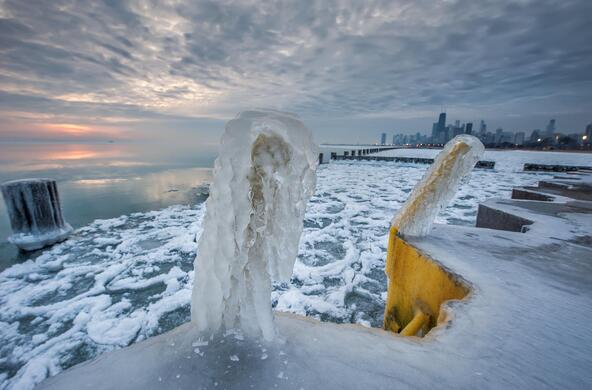Streamflow variability brought on by climate change will negatively affect the survival of salamanders, according to a new study by the University of Montana, the University of Connecticut, and the Cary Institute of Ecosystem Studies.
The researchers discovered that streamflow variability — fluctuations between low and high flows brought about by climate change — can kill salamanders while they are metamorphosing from larvae to adults. The work was published in the Sept. 5 issue of the Proceedings of the National Academy of Sciences.
“In our studies, we find that rivers are changing and not for the better. They are getting saltier, warmer, and more alkaline,” says study author Gene E. Likens, distinguished research professor at UConn and president emeritus of the Cary Institute. “It is a concern and it is a surprise to see that this is happening all over the world.”
Likens and colleagues studied spring salamanders living in five New Hampshire streams. Using a 20-year data set from Merrill Brook in New Hampshire, the researchers showed the abundance of spring salamander adults declined about 50% since 1999.
The researchers then studied whether streamflow variability at Merrill Brook and streams in the nearby Hubbard Brook Experimental Forest affected the survival of salamanders metamorphosing from larvae to adults. They found that fewer salamanders survived metamorphosis during years when steamflow variability was high, leading to the decline in the adult population.
“Increasing environmental variability may be especially challenging for species that undergo metamorphosis – like many insects and amphibians – because that’s a vulnerable period when they rely on stable environments for survival,” says study author Winsor Lowe, professor of forestry and conversation at the University of Montana.
Small headwater streams are home to diverse species and the source of clean water to downstream communities. However, these ecosystems are also losing protection under proposed Clean Water Act revisions, says Lowe.
“Our work underscores the vulnerability of headwater ecosystems in this era of climate change, the need for protection of vulnerable headwater species, and the value of long-term monitoring efforts,” says Lowe. “This work … expands our knowledge about the effects of climate change on a diverse group of species that are often overlooked because they spend most of their lives under rocks and logs in small, headwater streams.”
Likens notes the importance of studying the details within an ecosystem.
“Oftentimes when we think of climate change, we think of the large, visible effects like melting glaciers. Those aspects are very important but it is also important to realize that all components of the ecosystem are impacted by climate change. As we unravel what those effects are, we see more and more change, often leading to the degradation of the ecosystem,” says Likens.
“Whether it is birds, salamanders, grizzly bears, or maple trees, how everything interacts and functions is important because all are part of robust ecosystem function, which is the life support for the planet.”
Likens and Lowe collaborated on the research with Leah K. Swartz and Brett R. Addis of the University of Montana.
Citation
Hydrologic variability contributes to reduced survival through metamorphosis in a stream salamander. Winsor H. Lowe, Leah K. Swartz, Brett R. Addis, Gene E. Likens. Proceedings of the National Academy of Sciences Sep 2019, 116 (39) 19563-19570; DOI: 10.1073/pnas.1908057116






